Films of East Punjab
By Jasdeep Singh & Kuldeep Kaur in Cinema Essay
September 21, 2018 Jasdeep Singh Jasdeep Singh
Till 1947, the center of Punjabi film industry, like the Punjabi culture, was Lahore. But after partition of Indian subcontinent most of the film studios were obliterated. Most artists, filmmakers and technicians were left on north of the Ravi, while others struggled to make their way to Delhi, Bombay or Simla, dividing the industry.
Nehruvian Socialism
Films like Chaman, Kaude Shah, Gul Balauch, Gwandi and Ravi Paar drew continual public attention after the partition. Now the films were being dominated by urban stories. For the sake of humor, there was widespread usage profanity. Amidst such a time, Chaman (1948) captivated the audience with its political commentary. The echo of ‘Inquilab Zindabad’ sloganeered in it, is next heard in Sutlej de Kande (1964). In the film, when Pathaan Mama, disguised as the engineer son-in-law, tries to influence Balraj Sahni’s character, to get the tender for construction of Bhakhra dam, Sahni’s character in fit of rage exclaims,
“The land of Punjab where I stand today, is the land of Guru Gobind Singh, who blessed the weak with might and the meek with pride. Sacrificed his life and that of his children and family. And you want to spill blood here on the bank of the revered river Sutlej? Aren’t you ashamed? If the construction of Bhakhra dam stops, then the whole of Punjab will suffer.”
There is another instance in the film, where the Balraj Sahni’s character proclaims,
“Sure, Bhakhra village would be inundated,
But the entire nation will get food in return”
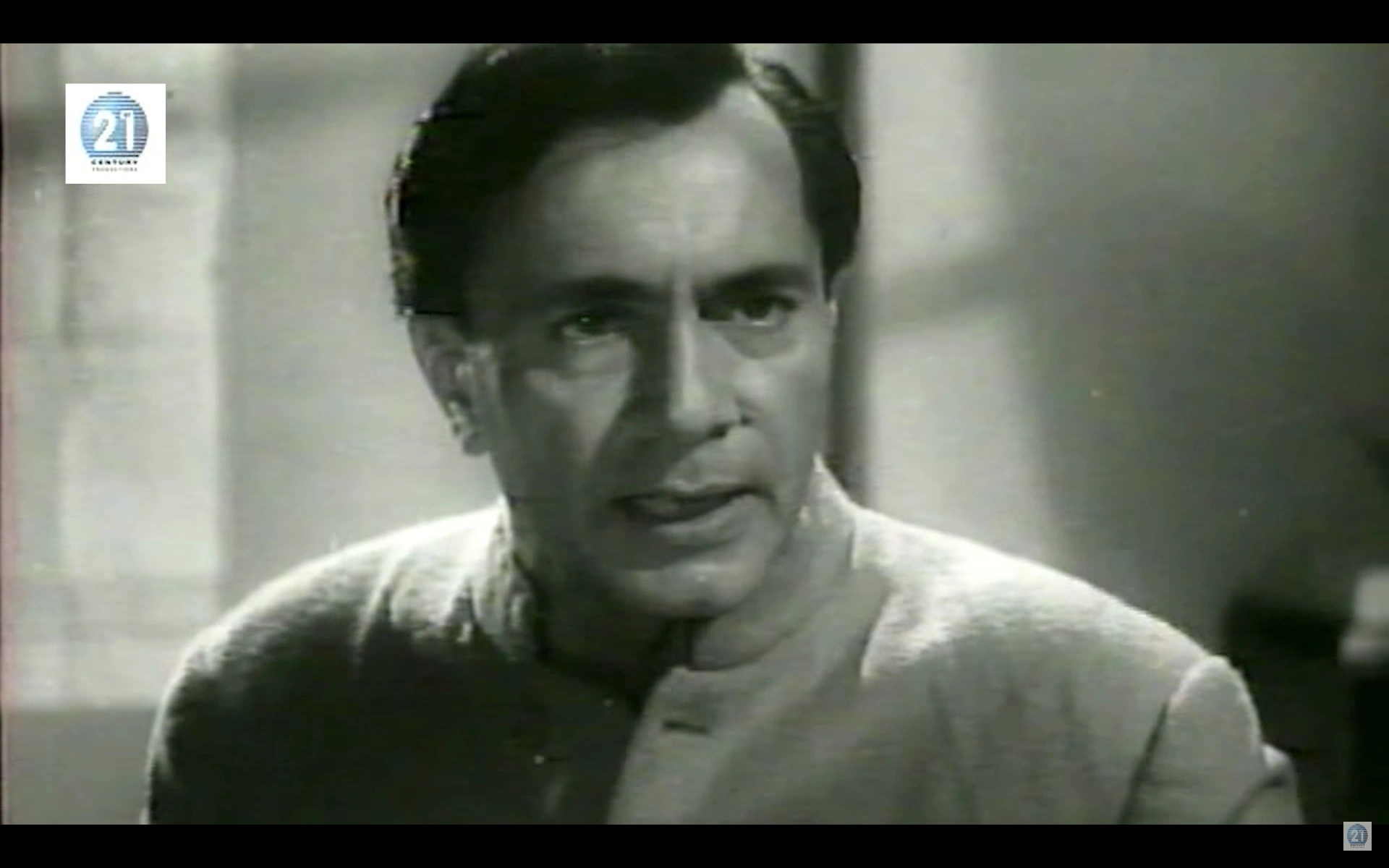
Balraj Sahni in ‘Satluj Dey Kandey’
This film not only had connotations of Nehruvian Socialism, but also ignited the aspirations of freedom struggle among the masses. One wonders how the displaced populace of partition inferred the film’s message. However, this message laid the foundation for the Green Revolution in the state. As to how did Punjabi cinema view the partition, the answer to this could be found in the film, Chaudhary Karnail Singh (1960). Directed by Krishan Kumar and written by Bekal Amritsari, this film, took up the issues of secularism and tolerance. Although the film raises the issue of communal harmony, the entire onus for it is put on the minorities.
Valaiti Babu (1961) starring Johnny Walker, shifted the trajectory of the plots of Punjabi films, influencing future films like Kikli, Dupatta, Gaddi, Jeeja Ji and Chhadya Di Doli. These films had a common premise - a city lad falling in love with a village girl. With characteristic over-dramatization, these films were more like counterfeit versions of the existing Hindi films, starring actors who were not able to find any meaningful employment in the latter or established Hindi film stars of Punjabi descent returning temporarily.
Religious Films
It was during this time, due to the bond Prithviraj Kapoor shared with the Punjabi language, when he worked on the film Nanak Naam Jahaaz Hai (1960) for a token fee. The Shiromani Gurudwara Prabhandak Committee (S.G.P.C) funded this film, which turned out to be a virtual pilgrimage to various Gurudwaras. Known for its message of universal brotherhood, it particularly impressed the audience with its religious soundtrack, for which the then head priest of the Golden Temple, Bhai Samund Singh, played an important role. With the display of newly constructed bridges, dams, roads, railway lines and farmland, the Punjabi cinema moved out of the film studio. Although the film grew popular, it strayed away from the core tenets of Sikhism and tilted toward superstition and ritualism.
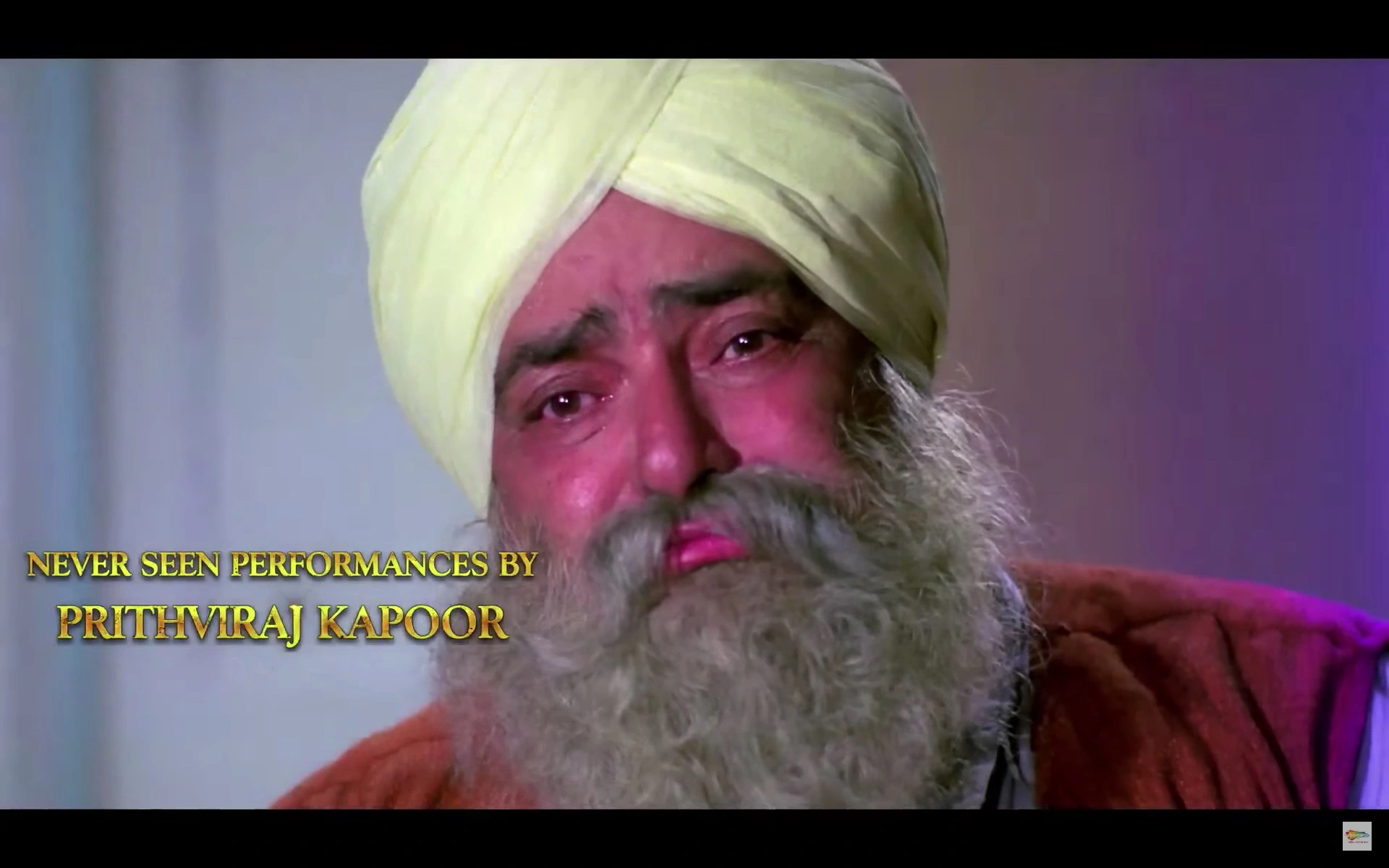
Prithvi Rajkapur as Gurmukh Singh in ‘Naanak Naam Jahaz Hai’
This film led to the inception of other religious films like Nanak Dukhiya Sab Sansaar, Dukh Bhanjan Tera Naam, Sat Sri Akal, Man Jeete Jag Jeeta, Sacha Mera Roop Hai and Mittar Pyare Nu which left a deep imprint on the Sikhs. In these films, the chronicles of the Sikh Gurus were intertwined with parables and sermonettes, giving them a preachy tone. Casting of Bollywood stars like Dharmender, Dara Singh, Sunil Dutt, Rajender Kumar, Johnny Walker, Rakhi, Rekha and Asha Parekh attracted the audience, which facilitated the collection of production fund.
After religious films Punjabi cinema gravitated towards the theme of freedom struggle. The distress caused by the widespread unemployment, inflation, corruption and black marketing led to disillusionment among the masses shattering Nehru’s “Tryst with Destiny” conception in them. Surinder Kohli’s Shaheed-E-Azam Bhagat Singh, Kartar Singh Sarbha (1977) and Shaheed Udham Singh (1977) were manifestations of the people’s renewed aspirations.
Formula Films
As we know that the Punjabi youth is broadly categorized as urban/educated and rural/uneducated, a boy or girl of the former category comes to their village after completing their city college education and in a hackneyed manner is confronted by a village boy/girl. Then some altercation between them is bound to happen. After settling down at home the person shall now go for a stroll in the fields amidst a bucolic setting with a song exalting the country’s rich culture playing in the background. Anything can happen after this. Usually then comes a formidable adversary in the form of a local thug (who will never be a feudal lord or a corrupt official), with whom there might or might not be a conflict prior to the love affair with the boy/girl with whom there was the initial confrontation. Fight sequences and dancing to love songs follow. In the end we are presented by a rather banal conclusion- true love conquering all evil, and a reformed character on his way to the path of righteousness. Whatever the calamity maybe, a sudden miracle takes away all woes. Alas! This is what happens and will happen in Punjab.“No one in the Punjabi film industry has the right to complain that good films flop. Because no one ever tried making them”
– Pash, ‘Non-traditional Analysis of Punjabi Films’ 1977-78
This was Pash’s analysis of the Punjabi films made before 1980. And what was made after that? What are the parameters of judging a film or a show? Chann Pardesi (1981), a popular film of the times, attacked the age-old feudal values, which were in gradual decline. The scene in which the landlord goes to jail seems implausible. He gets incarcerated for murdering his servant. The servant is presented to be of a clever and greedy nature, who tricks the good-natured landlord in committing another crime.
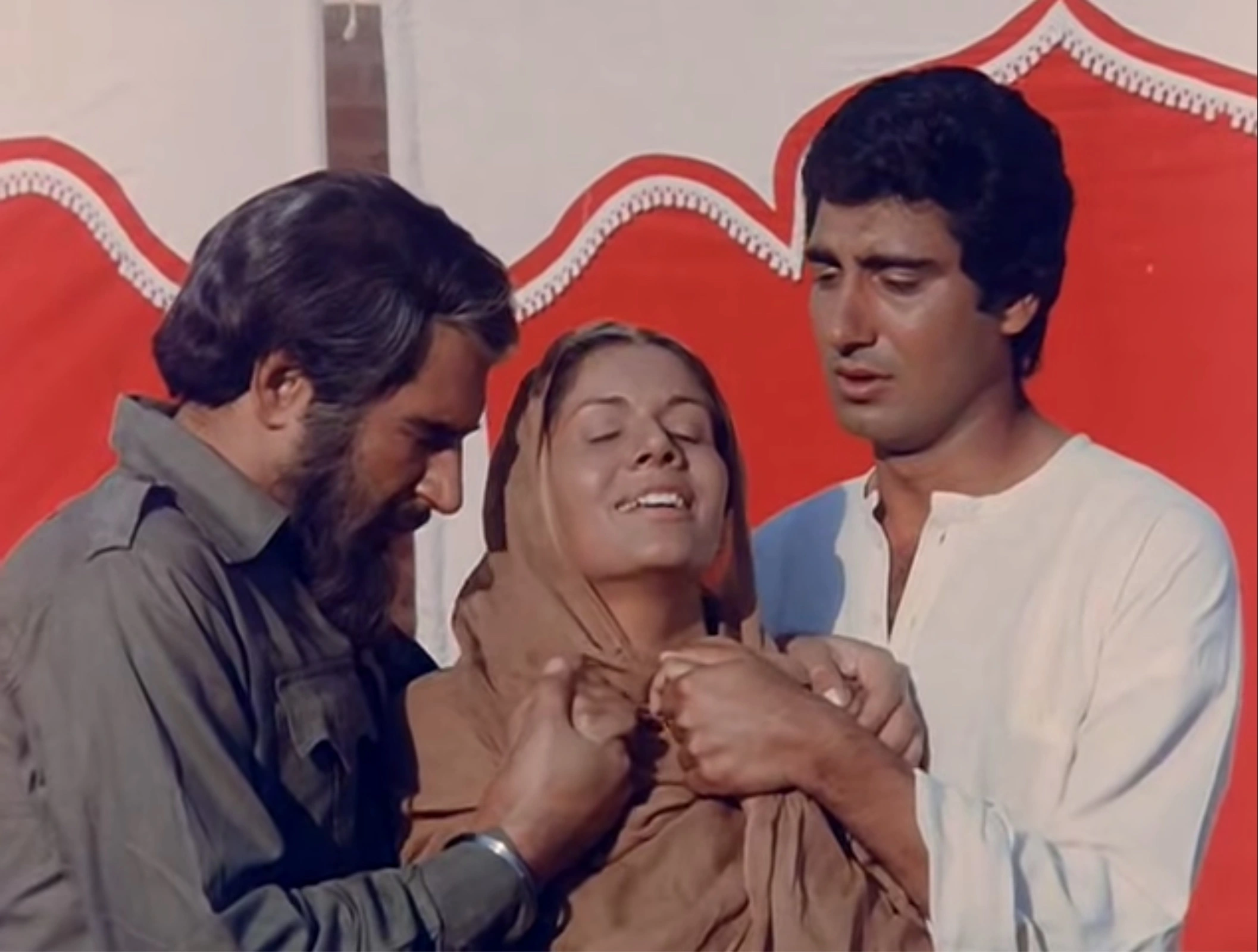
A scene from film Chan Pardesi
Laung da Lishkara (1983) and many other films were based on the same formula, which were no different from the existing love tales. The only difference was that in the love tales the lovers facing societal hurdles found eternal communion through death. Such an eventuality is improbable in today’s cinema as the writers have made the audience addicted to happy endings.
The Dark Age
The Khalistani and state terrorism between 1984-1995 led to the fall of Punjabi film industry. The 80’s films were all about the Jatt and the romance with his land. But instead of a landlord, the hero now was a self-cultivating farmer. Maula Jatt (1979) (Made in West Punjab) set the tone for the future films. Actor-director, Virender, used this formula in his films. He was murdered on the pretext of making obscene films. If this murder is seen through a socio-political prism, one could construe that Punjab was headed towards a complete mayhem. The issue of Punjabi identity prevailed over all other issues. The fundamentalists hijacked the ideological discourse and Punjab seemed beyond redemption.
All pervading innuendos, toxic masculinity, pride in land ownership and tacky costumes characterized these films. They were hardly reflective of the reality. The real issues of Punjab were obstinately absent. With the advent of television and video cassette recorder (V.C.R), the films were now being viewed from the comfort home rather than the cinema houses. The bitter memories of curfew orders and police encounters were still fresh. This period could be termed as the era of Gaggu Gill and Yograj Singh (cricketer Yuvraj Singh’s father). Like Sultan in Maula Jatt and Mustafa Qureshi, both played many identical roles, delivering similar dialogues. Conversely, Gurdas Mann’s Mamla Garbar Hai and Mehendi Shaganan Di, started a new trend of singers being cast in the lead roles of the films. The peak of this trend is witnessed in the first decade of the 21st century.
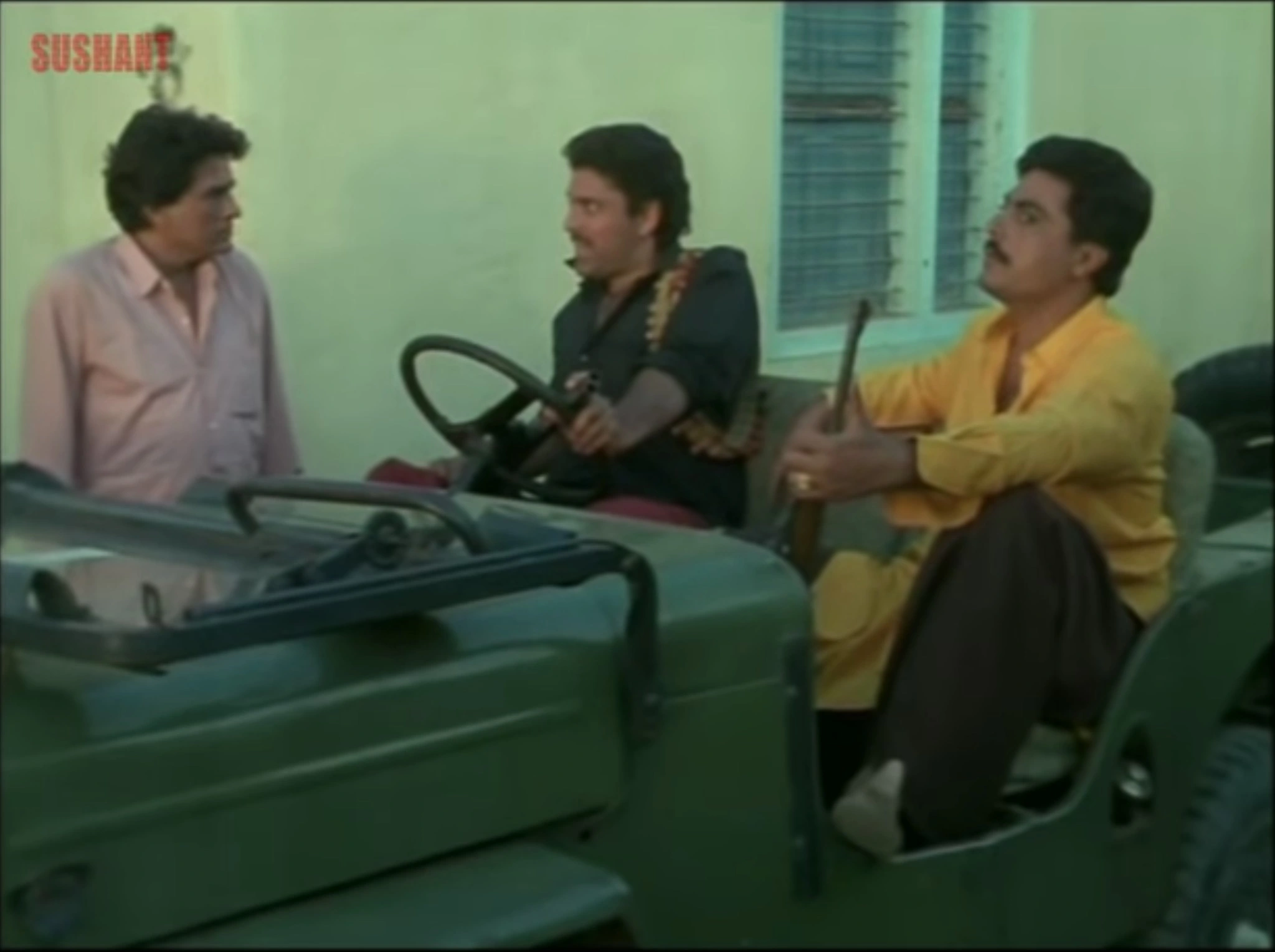
Varinder, Yograj & Gaggu Gill in ‘Jatt te Zameen’
Marhi Da Diwa (1989) deviated from this pattern. Based on Gurdial Singh’s acclaimed novel, this film examines the changing relationship between the farmers and the farm laborers. Although a similar premise, the film, instead of sugar coating the reality, depicts the agrarian society in its true essence. Unlike the shallow plots of other films, it was reminiscent of Punjabi love ballads. Pioneers of the 80’s parallel cinema like Deepti Naval, Raj Babbar and Pankaj Kapoor, gave exceptional performances in this film, which was funded by the National Film Development Corporation (N.D.F.C). For the first time, a landless family was at the center stage of a Punjabi film. In the film, Banta, son of a Jatt, influenced by the outcomes of Green Revolution and harboring capitalist ideals, cuts off a Taahli tree, which is part of the cultural and natural heritage of Punjab. However, his father, Dharam Singh’s character, epitomizes the value system associated the hard work and manual labour. When Dharam Singh’s wife and son object to erecting of a marhi of Jagseer’s dead father, he says,
“Can anyone even own the soil?
It’s beneath the living feet and over the dead ones.”
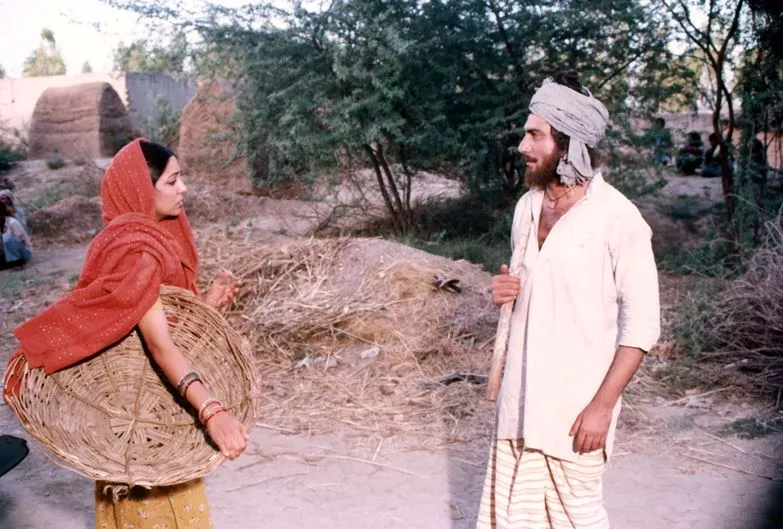
Dipti Nawal as Bhano and Raj Babbar as Jagseer in ‘Marhi Da Deeva’
The 1990’s
Other than the popular Punjabi singer, Gurdas Mann’s films, Kachehri (1994), Shaheed-E-Mohabbat Boota Singh (1999), Shaheed Udham Singh (1999), there were not many mentionable films made in this decade. These films reflected the influence of the Bombay film industry. Shaheed-E-Mohabbat Boota Singh, made by a young filmmaker Manoj Punj, is a tragic love story of Boota Singh and Zainab who are caught in the turmoil of 1947. The film depicted how manmade borders and religious restrictions can conflict with a pure human emotion such as love. The film epitomized how culture and history could be synthesized in art. It was in this year when Punjabi satirist Jaspal Bhatti along with Jaswinder Bhalla, Mukand Sharma, Gurpreet Ghuggi and Chacha Raunki Ram brought Mahaul Theek Hai (1999). Taking a dig at the police highhandedness and inefficiency, this film, through wit and humor, tells the story of common man harassed and tormented by the police and the politicians. The film became immensely popular and pioneered Punjabi comedy films of the coming two decades.
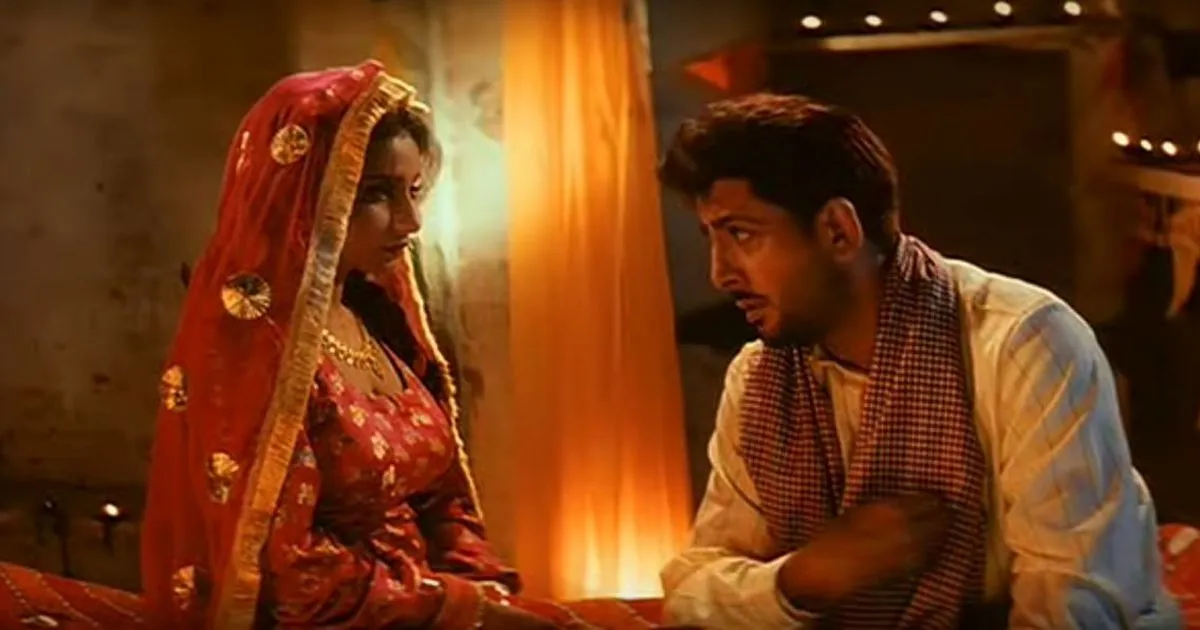
Divya Dutta as Zainab & Gurdas Mann as Boota Singh in film Shaheed-e-Mohabbat
21st Century: Singer hero and Comedy
Most well to do Punjabis migrated to countries like America and Canada in the 1980s. By the first decade of the 21st century Punjabi diaspora had accumulated enough capital to invest in the Punjabi entertainment industry. Popular Punjabi singer Harbhajan Mann collaborated with the director Manmohan Singh, who had worked under Bollywood legend Yash Chopra as a cinematographer and made Jee Aayan Nu in 2002. Made on a substantial budget, this visually appealing film turned out to be a big success at the box office and brought together the disintegrated film industry in Punjab. The film was based on the old traditional formula as stated by Paash earlier. The only difference was that the boy/girl instead of returning from a city college, returned from Canada on an aeroplane. Villains now, instead of being some dangerous thugs, were their own insidious relatives. In the end, as expected, love triumphs over all evil and the couple lives happily ever after in Canada. The 80s’ tractor flaunting Jatt hero was replaced by the fancy, foreign returned landlord. Impoverished Dalit characters were absent before and even now, if any, they were subjected to farcical portrayals of a servant or were killed in some brawl. Characters of Bihari migrant labourers were another addition in these films. But they too were portrayed in a comic light.
Anne Ghode Da Daan and the Independent Cinema
An experimental film, Anne Ghode Da Daan (2011) parted from this convention. Like Marhi Da Deewa, it is based on writer Gurdial Singh’s novel, and was funded by the N.D.F.C. It depicts urban and rural lives of landless laborers. This slow-paced film, forces the audience to scrutinize the ambiguity of life. Although not a commercial success, the film got universal critical acclaim. It entered Venice Film Festival, won at the Abhu Dhabi Film Festival also won National Film Award, giving international recognition to Punjabi cinema. Most of the cast comprised of non-professional actors who were common villagers. Their performances capture the ordinary rhythms of life, transporting the viewer to Dalit ghettos of Punjab. The scenes filmed with coherent audio-visual integration, led to aesthetic introspection in the film industry, influencing the technical aspects of future films. However, any shift in the subject matter is still a distant dream.
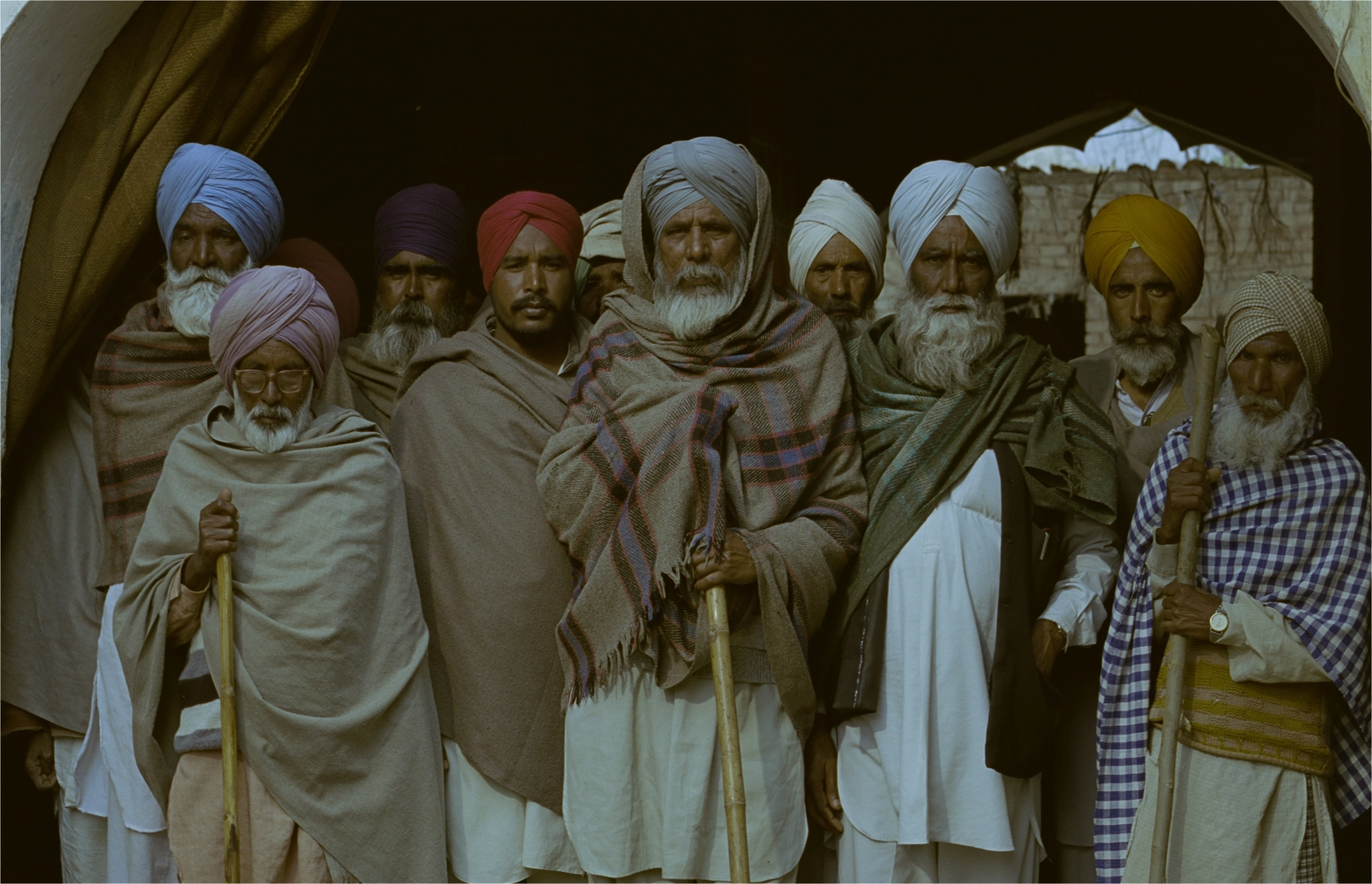
A scene from the ‘Anne Ghode Da Daan’
Till 2010, to be a celebrated Punjabi singer, was the first stepping- stone to become an actor. Film and music industry have always had some form of collaboration in the past, but today both are inseparable. After Gurdas Mann and Harbhajan Mann, Gippy Grewal and Diljit Dosanjh become the singer heroes of the next generation. Jatt and Juliet (2012) becomes the next milestone of the Punjabi film industry. In the film, the Jatt hero, instead of returning from Canada, is fresh off the boat in Canada and falls for the local beauty of Indian descent. This time the obstacle to love isn’t any clichéd villain but some minor conflicts between the families, which get resolved by the end. The fights are limited to comic bickering. With the story being entirely dependent on comedy, new targets of disparagement humor are also found. And this time the victim is the Arora-Sikh-Khatri community.
Qissa (2013) and Chauthi Koot (2015) were succesors to the new-wave films like Marhi Da Diwa and Anne Ghode Da Daan. Anoop Singh’s Qissa tells the story of a family which is settling down after getting uprooted during the partition. In the film, after the protagonist’s wife gives successive births to four daughters, he raises his fourth daughter as his son concealing her female identity. The girl, who lived her entire life wearing man’s clothes and adopting a masculine demeanour, is married to a girl after reaching puberty. But what happens when the time to consummate the marriage comes? The film tries to explore the problem of patriarchy through this unique plot.
Based on the collection of stories of writer Waryam Sandhu, Chauthi Kooth, directed by Gurvinder Singh, is set in the gruesome era of militancy in Punjab. Hindus and Sikh characters are terrified of each other while travelling together on a train. For a family living in a house on a farm, its guard dog, ironically, has become the reason for danger. One night the Khalistani militants threaten to kill Joginder, the next day security personnel beat him up and shoot dead the dog. These two armed-parties weren’t able to tolerate the barking dog. Screened at Cannes Film Festival, the film earned critical acclaim.
Other than in the parallel cinema, there were attempts in the Punjabi films to depict agrarian crisis, student struggles, and the problem of drug addiction, notwithstanding conventional story structure. Manoj Punj’s Des Hoya Prades (2005) deals with youngsters influenced by Khalistani fundamentalism post 1984 and the consequent identity crisis. Mass migration of Punjabi youth during the turmoil and its long-term effects are explored in the film. His next film, Waris Shah- Ishq Da Waris (2006) retells the classic Punjabi tale of Heer Ranjha. Naabar (2013), directed by Rajeev Sharma, depicts the exploitation of susceptible Punjabi folk by conmen masquerading as travel agents. Anurag Singh’s Punjab-1984 (2015) again recounts black days of terrorism. Mitti (2010), Sirsa/ Sikander (2013) and Qissa Panjab (2016) , directed by Jatinder Mauhar, deal with rampant drug abuse, political apathy and mistrust among the Punjabi youth. Apart from depiction of violence in these films, farcical comedy is replaced by diagnostic attempts to these socio-political problems.
Since 2015, there have been broadly four types of Punjabi films. The first type is of the stories which are set before the hero and the heroine get married. A successful Punjabi singer will play the hero’s character, songs playing intermittently, and the films will do well by the virtue of the performances of the comedians. A win-win situation for all. Manje Bistare (2016), Manje Bistare-2 (2019), Nikka Zaildar (2016), Nikka Zaildar- 2 (2019) exemplify this type. Their sequels represent their success. The second type is in which, in the name of social reform, religious morality is preached in order to take the audience on a righteous path. Kudesan (2012), Eh Janam Tumhare Lekhe (2015), Mitti Na Farol Jogiya (2015), Ardaas (2016) are of this second type. The third type is of the glorified biopics of sportsmen, gangsters and decorated soldiers. For example: Sardar Sahib(2017), Rocky Mental (2017), Mintu Gurusaria, Dakuan Da Munda (2018), Harjeeta (2018). The last type consists of the period dramas. These stories usually dating back 50- 60 years, are earning the praise of audience for showcasing the lifestyle and business affairs of the bygone era. Banking on the nostalgic sentimentality of the proliferating Punjabi diaspora, which is facing alienation amidst pecuniary struggles in the foreign lands, these films provide a sense of cultural pride. Angrez (2015) and Bambukaat (2016) fall under this category.
These films tend to shy away from the harsh realities of life and feed on the pre-existing delusions and the biases of the audience. After a tumultuous journey of 20-25 years, it is certain that the Punjabi film industry has thrived. As for the serious and cerebral films, with the efforts of few mavericks and with changing times and needs of the audience will also be made.
Translated from Punjabi by Anuraj Singh Sibia
Punjabi original published in Baramah journal, Lahore (2020). Editors: Amarjeet Chandan, Zubair Ahmad
Read in
Gurmukhi Punjabi or
Shahmukhi Punjabi.
Download the
Gurmukhi PDF or
Shahmukhi PDF.